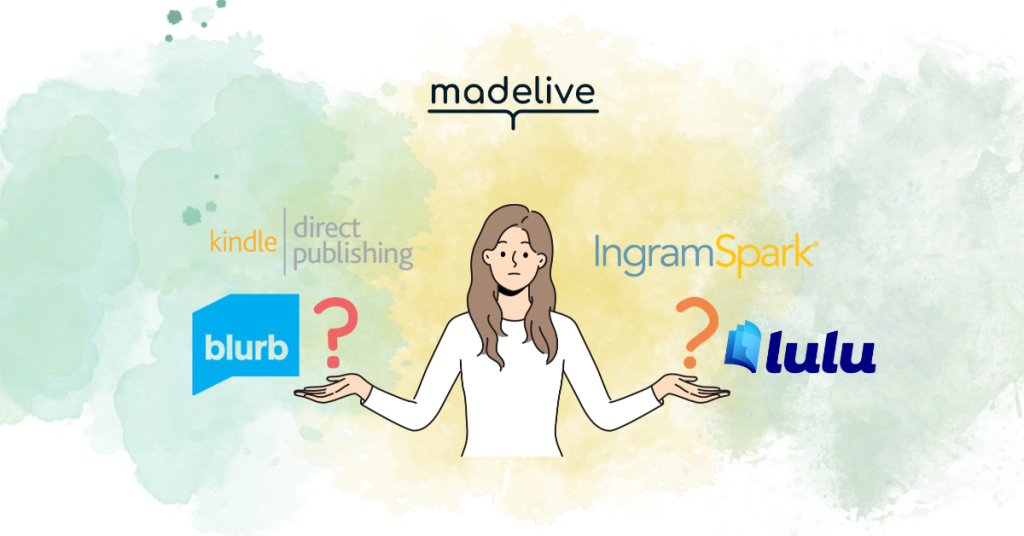Embarking on the journey of self-publishing a children’s book is an exciting venture. With the plethora of self-publishing companies available, finding the one that aligns with your vision, budget, and distribution aspirations is crucial. This guide aims to simplify your decision-making process, ensuring your cherished children’s book reaches its young audience effectively.
Understanding Your Publishing Goals
Before diving into the sea of self-publishing options, clarity on your publishing goals is essential. Whether you envision publishing a single story, a series, or embarking on a long-term writing career, your objectives will significantly influence your choice of a self-publishing company. Consider if you seek full control over the publishing process or if guidance from a seasoned company is more your pace. Additionally, ponder over the desired distribution reach—be it digital platforms like Kindle or Apple Books, print-on-demand services, or physical bookstore shelves.
Action Step: Draft a clear list of your publishing objectives. Consider the scale of your project, your desire for creative control, and your long-term vision for your writing career. Reflect on whether you aim for digital-only distribution or wish to see your book in physical stores.
Budgeting for Self-Publishing Success
The cost of self-publishing a children’s book can vary widely. Establishing a budget early on helps navigate through options without compromising the quality of your book. From layout and design to editing, illustration, and marketing, each aspect carries its price tag. Delve into the offerings of different self-publishing companies, paying close attention to included services and potential hidden costs.
Action Step: Create a comprehensive budget that accounts for all aspects of the publishing process. Start by listing potential costs, including editing, illustration, formatting, and marketing. Use this budget as a benchmark when evaluating self-publishing companies.
Distribution: Reaching Your Young Readers
A pivotal factor in your self-publishing decision should be the distribution capabilities of the company. The best self-publishing companies for children’s books offer extensive distribution networks, including print-on-demand for children’s books and ebook platforms, ensuring your story is accessible to a broad audience.
Action Step: Identify your key distribution channels. Research which distribution platforms are crucial for your book’s success and ensure any potential self-publishing company supports these outlets. Consider both digital and physical distribution to maximize reach.
Leveraging Customer Reviews and Company Reputation
Gaining insights from other authors’ experiences can be invaluable. Customer reviews and the company’s standing with entities like the Better Business Bureau can shed light on the reliability and author satisfaction levels. Look for feedback on customer service, support, and the overall pros and cons of partnering with the company.
Action Step: Conduct thorough research on potential self-publishing companies. Read customer reviews, check ratings on the Better Business Bureau, and gather insights from author forums. Compile a list of companies with positive reputations and high levels of author satisfaction.
Ownership and Rights: Keeping Control of Your Work
One of the perks of self-publishing is retaining ownership of your creative work. Ensure the company you choose respects this principle, allowing you full control over your book’s rights and future publishing opportunities.
Action Step: Review the terms and conditions related to rights and ownership for each self-publishing company you consider. Ensure you retain full ownership of your work and have the freedom to publish elsewhere in the future. If unclear, don’t hesitate to reach out to the company for clarification.
As you embark on the exciting journey of bringing your children’s book to life, remember that choosing the right self-publishing company is a pivotal decision that can shape your book’s success. With your publishing goals outlined, a budget in place, and a clear understanding of your distribution needs and rights, you’re well on your way to making an informed choice.
If you’re looking for a self-publishing platform that offers comprehensive support, tailored distribution options, and respects your creative ownership, consider Made Live. Our platform is designed with children’s book authors in mind, providing intuitive tools for writing, illustrating, and publishing your story. With Made Live, you can easily navigate the self-publishing process, from initial concept to getting your book into the hands of eager young readers.
Take the next step in your publishing journey with Made Live. Discover how our platform can simplify the self-publishing process, allowing you to focus on what you do best—creating enchanting stories for children. Explore Made Live today and see how we can help turn your publishing dreams into reality.
Your story deserves to be told. Let Made Live help you share it with the world.




